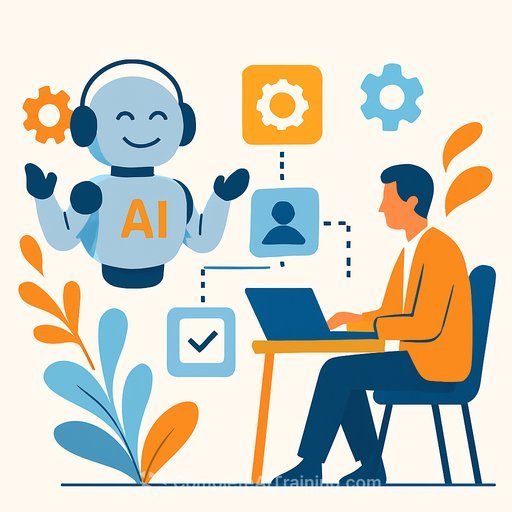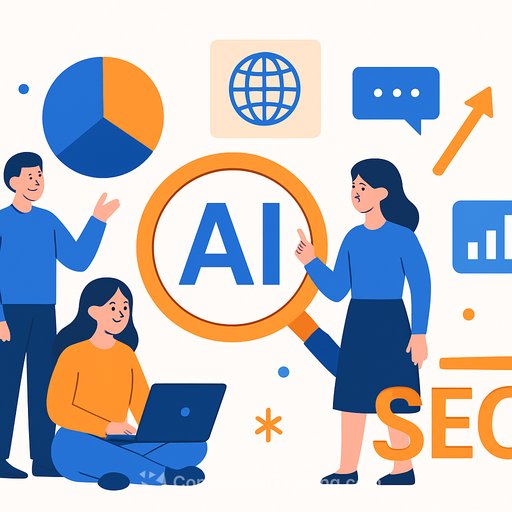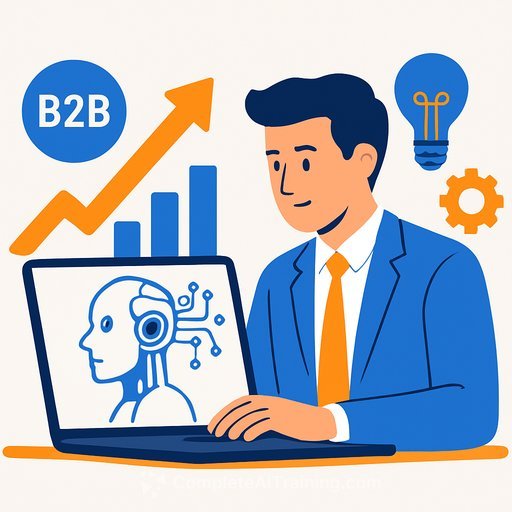How AI Just Nuked Marketing As We Know It
Bloomreach CMO Amanda Elam Cole just put a stake through the heart of the linear "workflow." The old playbook assumed time, teams, and tools moved in tidy steps. AI collapsed those steps into a single loop that thinks, acts, and learns in real time. If you lead marketing, it's time to rebuild from first principles.
The marketing workflow is obsolete
Workflows were built for predictable channels and slow feedback. AI compresses creative, ops, media, and analytics into one continuous system. The unit of work is no longer a task; it's an outcome with guardrails.
- Start with one objective and constraints: revenue target, budget, risk limits, brand rules.
- Replace "how we do things" with policies: voice, claims, compliance, data boundaries.
- Wire feedback everywhere: conversions, contribution margin, quality signals, human ratings.
From prompts to autonomous campaigns
Prompts write assets. Agents run the campaign. Set the goal, feed constraints, and let the system propose audiences, creative, spend, tests, and pacing. Your job shifts from clicking buttons to setting boundaries and judging outcomes.
- Define the goal stack: revenue, CAC, LTV, payback window, and brand rules.
- Connect data: product catalog, pricing, inventory, CRM, analytics, consent.
- Create a brand system: voice, tone, visual cues, claims list, "never say" list.
- Set review gates: pre-launch approval, daily guardrail checks, weekly learning review.
- Run cheap experiments first. Cap budgets. Scale what proves itself.
The end of websites? Agents as a new channel
Static sites are losing center stage. Buyers already interact inside inboxes, chats, search surfaces, and embedded assistants. Agents will pull your catalog, content, and pricing into those contexts and create personalized micro-experiences on demand.
- Expose your product and content via APIs and structured data. If an agent can't fetch it, it won't sell it.
- Shift from "visit our site" to "get answers anywhere." Chat, SMS, social DMs, retail apps, and partner agents.
- Measure agent-sourced revenue and treat it like a channel with budget and targets.
Authenticity vs. automation
People can smell generic AI content. The fix isn't less AI-it's more truth. A clear point of view, real stories, and proof beat high-volume filler every time.
- Build a voice library with examples of "this sounds like us" and "this doesn't."
- Keep a "truth repo": approved stats, references, product claims, and source links.
- Label AI-assisted content when useful, and always add a human editor pass on flagship assets.
- Prioritize firsthand stories: customer clips, founder notes, product demos over polished fluff.
Leadership through uncertainty means unlearning
The safe path is now the risky one. Many teams are still measured on MQL volume while their buyers are converting through agents and conversational surfaces. Update the scoreboard.
- Rebase KPIs to revenue contribution, LTV/CAC, speed to signal, and payback.
- Adopt a two-week experiment cadence with a clear "kill or scale" rule.
- Run pre-mortems before launches; design exit ramps for bad bets.
Soul care and survival for modern leaders
Constant change fries attention. You need space to think and the energy to hold the line on quality.
- Block no-meeting time for deep work. Protect it like a launch date.
- Give an AI copilot your busywork: summaries, first drafts, data pulls, meeting notes.
- Write a weekly one-pager on what you learned, what you're stopping, and what you're doubling down on.
Force the reset: break habits, break playbooks
Change isn't an event; it's a skill. Practice it on purpose.
- Hold a quarterly "workflow kill day." Remove any step that doesn't change the outcome.
- Run an "agent-only" pilot with strict guardrails and compare to your best manual baseline.
- Carve out 10-20% of budget for experiments. Report learning ROI, not just revenue ROI.
30-60-90 day action plan
- Day 0-30: Audit your top three workflows. Map data access, approvals, and cycle time. Write brand guardrails and claims policy. Pick one agent use case (e.g., lifecycle email or paid creative testing).
- Day 31-60: Connect the data. Build the brand system. Launch a sandbox agent with review gates. A/B agent vs. human outputs on quality, cost, and speed.
- Day 61-90: Scale the winning setup to a second channel. Kill two legacy steps per workflow. Publish your AI policy to the team. Shift budget to agent-led programs that hit payback targets.
Recommended resources
- McKinsey: The economic potential of generative AI
- AI Certification for Marketing Specialists - Complete AI Training
The takeaway: workflows got you here; systems that think will take you forward. Set the goal, set the guardrails, and let agents earn their keep. Keep your voice human and your metrics honest.
Your membership also unlocks:






